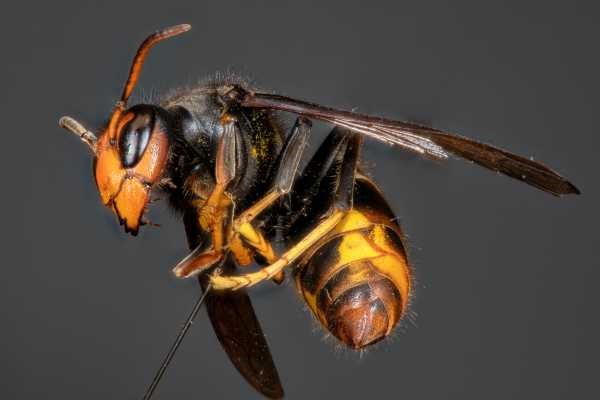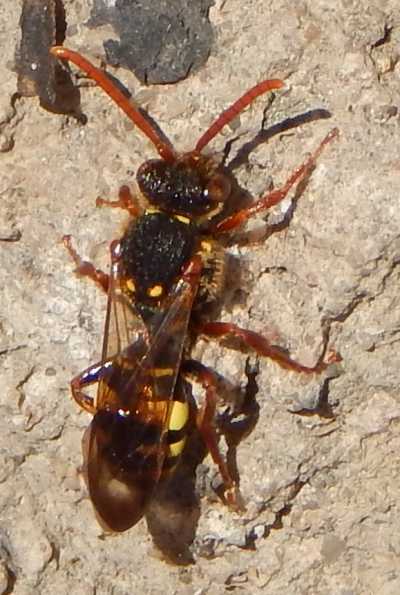Do Wasps Swarm?
Question:
Do wasps swarm, and if so, why do they swarm?
The short answer is:
For various reasons, some social wasp species in South America are known to swarm and establish a new colony in a different location.
5 Quick Facts About Swarming Wasps
- Unlike honey bee swarms, a wasp swarm may contain multiple egg laying females (in a honey bee swarm, there will only be one egg layer - the queen).
- Species of swarming wasps communicate new sites with chemical trails.
- Not all social wasp species engage in swarming.
- Swarming can be dangerous for the wasps engaged in swarming, because individuals can be attacked by predators.
- Swarming wasps do so either to relocate a whole colony, or to establish a new one.
Reasons for swarming to relocate a colony
There are 3 main reasons for relocating a colony:
1. Absconding swarm
Social wasps may swarm if their nest is attacked by predators, such as ants, or becomes damaged beyond repair for other reasons, such as weather storms5.
2. Emigration Swarm
Wasps swarming may be related to seasonal factors in geographical locations. For example, a swarm may form, and facilitate a move to a new location at the beginning of a wet season5.
3. Founding A New Colony
Social wasps that swarm transfer part of an established colony to another location, thereby creating a new productive colony4.
Which wasps swarm?
Many of the social wasp species with which we are mostly familiar (such as the German wasp that may show interest in our picnic foods and fruit drinks) do not swarm, however, a 2008 study published in Biological Journal of the Linnean Society, refers to over 30 species of swarming wasp found in South America1.
Other species such as Polybioides tabidu, are found in Africa2.
Some examples of wasps known to swarm include:
Agelaia vicina3
Neotropical social wasps with huge colonies that can exceed over one million individuals.
Brachygastra augusti
A species of honey wasp found in Central and South America.
Parachartergus colobopterus4
Found in Central and South America, colonies contain multiple queens.
Polybia occidentalis5
Another species of honey wasp found in Central and South America, and common in Brazil and Costa Rica.
Swarm behavior and finding a new nest site
If a colony is absconding or emigrating, then in most swarm-founding wasps the entire adult population evacuates the nest5. Alternatively, a part of the colony will swarm in order to establish a new colony elsewhere4.
The swarm forms a temporary cluster nearby, such as on the branch of a tree5.
Scout wasps begin the search for a suitable new site, and scent mark any routes to potential candidates with a a secretion from the sternal gland on the abdomen that is left on leaves and twigs. The scent marks serve to recruit nestmates to inspect the site, and eventually, when a single site has been decided upon, this is communicated back to the swarm4.
The resting swarm of wasps then takes off into the air, and makes its way to the new preferred site. Meanwhile, construction of the nest at the new site has already begun, but it may take up to a week before the new nest site is fully built4.
How far away do wasps swarm from their original nest?
In one study concerning a species found in Costa Rica, Polybia occidentalis, it was found that a swarm may emigrate anywhere from 1m to 250m to a new nest site. It may take 20 - 60 minutes for all individuals to reach the new site5.
Threats to swarming wasps
Quite apart from the energy cost of swarming and setting up a new nest, the act of swarming itself is risky for a colony. Potential predators could include mantids, robber flies, spiders and ambush bugs5.
Why do some species of social wasp swarm, whilst others do not?
This is largely dependent on the lifecycle of the wasp species.
Those social species with perennial colonies (i.e. potentially lasting multiple seasons) may swarm to form a new colony in a different location.
The colonies of other social species may be short lived, with only the newly emerged queens surviving and overwintering as adults, ready to emerge the following year to start a new colony.
References
1. NOLL, FERNANDO B., and JOHN W. WENZEL. “Caste in the Swarming Wasps: ‘Queenless’ Societies in Highly Social Insects.” Biological Journal of the Linnean Society 93.3 (2008): 509–522. Web.
2. Henshaw, Michael, and Joan Strassmann. “The Independent Origin of a Queen Number Bottleneck That Promotes Cooperation in the African Swarm-Founding Wasp, Polybioides Tabidus.” Behavioral Ecology and Sociobiology (2000): n. pag. Print.
3. Zucchi, Ronaldo, et al. “Agelaia Vicina, a Swarm-Founding Polistine with the Largest Colony Size among Wasps and Bees (Hymenoptera: Vespidae).” Journal of the New York Entomological Society, vol. 103, no. 2, 1995, pp. 129–37. JSTOR, http://www.jstor.org/stable/25010148. Accessed 9 Jun. 2022.
4. Strassmann, J. E.; Queller, D. C.; Solis, C. R.; Hughes, C. R. (September 1991). "Relatedness and queen number in the Neotropical wasp, Parachartergus colobopterus". Animal Behaviour. 42 (3): 461–470. doi:10.1016/S0003-3472(05)80045-4
5. Bouwma, A.M., Bouwma, P.E., Nordheim, E.V. et al. Founding Swarms in a Tropical Social Wasp: Adult Mortality, Emigration Distance, and Swarm Size. Journal of Insect Behavior 16, 439–452 (2003). https://doi.org/10.1023/A:1024836327936
If you found this page helpful or interesting, I'd really be grateful if you would share it with others - if not this page, perhaps another, such as Gardening For Bees.
Thank you so much :) .

